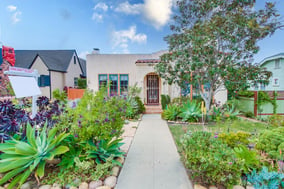How to Find Accessible Housing in San Diego
Finding a home that meets all your mobility needs can be like finding the proverbial needle in a haystack. In other words, knowing where and how to look is key. There are websites that specialize in such listings and real estate agents who have experience finding properties for mobility-challenged clients. However, be aware that it’s sometimes easier to find a property you can modify than one that’s already been made accessible.
Find a House
Savvy agents are adept at looking for houses that can be easily adapted for an individual in a wheelchair or someone who uses a mobility-assistive device. And finding a home that can be modified to suit your needs opens up a broader field of inquiry and makes your search considerably easier, even if it means facing costs for renovating when you find the house you like.
If you’re beginning your search online, start with Barrier Free Home or Accessible Properties, two websites that list homes which meet the needs of mobility-challenged homebuyers. Searches can be customized based on location, features, and price. You’ll also find sections with information and case studies about adapting features to the needs of individuals who are in a wheelchair, such as lowered kitchen counters, curb-free showers, and even accessible pools. If you’re having a lot of trouble finding properties that are modified or modifiable, consider reaching out to associations that help disabled people, such as the National Multiple Sclerosis Society, as well as occupational therapists and attorneys who deal with clients who have special needs.
Making Modifications
Necessary modifications can involve making simple changes or doing a complete remodel. According to HomeAdvisor, "Disability remodeling is a home improvement or series of improvements that will increase the efficiency of your day-to-day life and your home’s overall accessibility." Such improvements mainly take place in the kitchen, bathroom, and exterior. Kitchen modifications include widening the aisles to accommodate wheelchairs, making the sink and faucet handles easier to use, and lowering countertops and cooktops.
Bathroom accessibility can be a significant problem for homeowners with mobility challenges. For those in a wheelchair, it can be very difficult to maneuver easily and utilize sinks, vanities, toilets, and shower stalls. The ADA calls for a five-foot turning radius for wheelchairs in all bathrooms, which is often enough to require renovations. You’ll need a roll-in shower with a flat surface, non-slip surface material or slip-resistant pads, and grab rails. Opt for an open sink that can accommodate leg room and consider removing a cabinet vanity, which will cut down on available space. One of the most important features is the height of the toilet seat, which should be 17 to 19 inches high with grab rails along the side. Making the kitchen accessible usually means lowering the sink and counters for better food preparation access. Replace cabinet knobs and install pulls.
One of the most common accessibility needs is an exterior wheelchair ramp and a threshold-less entryway. A viable home should be large enough to accommodate such an addition. The ramp should be no more than 30 inches high, at least 42 inches wide, and include handrails. Don’t overlook other exterior criteria, such as a driveway large enough to accommodate a wheelchair-accessible vehicle.
Doorways represent another obstacle to free mobility and may need to be adapted to meet your requirements. According to the Americans with Disabilities Act (ADA), doorways should be 32 inches wide and 48 inches high to accommodate wheelchairs, with doorknobs within easy reach and enough room to turn around in. Consider having traditional doors replaced with pocket doors, which remove all potential doorway obstruction by sliding into the wall when not in use.
Creating an accessible, obstacle-free home is a long-term investment in a home that’s both comfortable and convenient. A well-targeted search can produce a home that’s easily adapted to your physical requirements if not already modified for accessibility.



